Here’s another critical review of George Monbiot’s latest book, Regenesis, by Chris Smaje, author of Small Farm Future. This follows on from last week’s review by Simon Fairlie. Lowimpact firmly supports organic, mixed smallholdings producing food for local markets. Even if our food future involves ‘farm-free’, bacteria-based food factories, it doesn’t mean that all food has to be produced that way, and we do away with agriculture altogether. Imagine the scale of energy input that would be required to do that, and imagine trying to prevent corporations from owning the sector, which would concentrate wealth an power even more than it is now, and make it even more difficult to move away from the endless GDP growth that is the root cause of the destruction of nature.
Over to Chris:
From regenesis to re-exodus: of George Monbiot, mathematical modernism and the case for agrarian localism
When you read a book with which you profoundly disagree, I guess it’s usually best just to shrug, put it back on the shelf and get on with your work. The hatchet job review is a popular but ignoble genre. Having been the object of one myself I can attest the outcomes are rarely positive, apart perhaps from a warm glow of superiority in the reviewer, which is usually ephemeral.
So I want to tread carefully, particularly because George is a decent human being who’s devoted his considerable talents to making the world a better place and who scarcely deserves most of the mud that’s flung at him. Still, when I gave a talk about my own book at the Food and Farming Literature Festival, Miles King asked for my views on George’s analysis, noting it was the elephant in the room for those like me making the case for agrarian localism. Now that I’ve read the book, I’d have to agree with Miles. If George’s vision comes to pass I think it will, contrary to his own aspirations, represent an alignment between progressive environmentalism and corporate-capitalist interests that will delay further, perhaps catastrophically, the need to create low-input agrarian localisms and ecological culture.
So, given his influence, I feel the need to make the case as best I can for localist alternatives to George’s regenesis. I will try to do it while being mindful of the pitfalls of the hatchet job.
Farmers often get riled by George’s plain dislike of livestock farming, more so by his almost as plain dislike of livestock farmers. He’s now extended the former pretty much to farming in general. But the main problem with his analysis as I see it is the underlying assumptions about human society and ecology. That’s mostly what I’m going to write about here under four headings – urbanism, government, land sparing and modernism – but there are some agricultural puzzles at the heart of the book, and we’ll need to look at those too.
First, it might be helpful to offer a brief thumbnail of the book’s structure. And to give credit where it’s due, it all starts off very well with a nice chapter about the work George does in the orchard he planted in Oxford and the amazing organisms in the soil beneath it, followed by two strong chapters that forensically anatomize the pathologies of the food and farming system in Britain and beyond. Things start to go awry at the end of that third chapter with the case for land sparing, which I’ll come to. But then the book changes direction with three engaging but problematic chapters about various people, mostly in Britain, striving to address these pathologies and improve the existing food and farming system.
These chapters are problematic because, while they’re sympathetic (sometimes overly) to their protagonists and the approaches they’ve taken, they don’t characterize the issues underlying these approaches sharply enough. With one surprising exception, this allows George to set the various approaches up – albeit in the nicest possible way – to fail in comparison to his preferred approach. This is the factory-based fermentation of food to feed humanity, the (also problematic) case for which is laid out briefly in Chapter 7 of the book.
The book then moves to a wrap-up by way of Chapter 8, the most problematic of the lot, which basically elaborates George’s contention that “The pastoral story is one that urban civilization tells against itself without a flicker of disquiet: the shepherds and their sheep are good and pure, while the city is base and venal” (p.216). If only that were true, we’d be a darned sight closer to creating genuinely regenerative and renewable human ecologies than at present, though still a way off. Alas, the opposite is the case.
Anyway, with that in mind, let’s turn to my first problematic theme of the book – urbanism.
Urbanism
George quarrels frequently with arguments for local food throughout his book, but the real clincher as far as he’s concerned is an oft-cited study in Nature Food that found it would only be possible to feed a small proportion of the world’s people from food grown within a 100km radius of their homes, because so many people live in cities far away from the world’s breadbasket regions. In George’s words,
You can negotiate with politics and economics, market structure and corporate power. But you can’t negotiate with arithmetic. Given the distribution of the world’s population and of the regions suitable for farming, the abandonment of long-distance trade would be a recipe for mass starvation (p.146)
Later on, he writes that “most of our food has to be grown, for simple mathematical reasons, far from where we live” (p.226).
Suppose we shifted the focus from the distribution of the population across space to the distribution of money across the population. We might then rerun the first quotation something like this:
You can negotiate with politics and economics, market structure and corporate power. But you can’t negotiate with arithmetic. Given the distribution of global wealth and of occupations suitable for amassing it, policies to radically alter these would be a recipe for mass impoverishment and ruralization.
I doubt George would ever write that second paragraph. But then why write the first? The distribution of the human population towards cities and away from productive farmlands isn’t a matter of simple mathematics but of a complex (though perhaps not that complex) political, economic and social history that you absolutely can argue with, that’s strongly related to the distribution of wealth, and that in any case is beginning to rewrite itself regardless of anyone’s arguments. For reasons that I and others have explored elsewhere, the future is going to be rural. And in that future the places where most people will live will be the ones that are suitable for farming. Not for mathematical reasons, but for ecological and biophysical ones.
That does not, of course, mean it’s a good idea to abandon long-distance food trade overnight, which certainly would result in mass starvation. Happily, no serious proponent of local food does argue that. Nevertheless, it would be a good idea to start rethinking global trade and settlement patterns from the ground up, bearing in mind the coming rural re-exodus from fossil fuelled and capital-fuelled urbanization. I concede it’s a difficult thing to do. So is redistributing wealth. But it’s fundamentally a political and ecological thing to do. Arithmetic has little to do with it.
In Chapter 3, George makes a familiar, and superficial, case against local food – what I’d call the bad-beef-and-heated-greenhouses gambit. As I discussed in my previous post, the main problem is that this gambit considers only the unit carbon costs of high-input systems, not the total costs of such systems compared to low-input local alternatives. I won’t go over that ground again here. The debate, if you can call it that, between localists and global food trade proponents is pretty polarised. Maybe there’s space for some middle ground. Just because localism can’t provide everything it doesn’t mean it shouldn’t provide more. But ultimately I think there’s a parting of the ways between the two visions here. Urbanism and long-distance trade require massive carbon, energy and materials intensive infrastructures that I doubt will be feasible in the long-term within liveable planetary boundaries, so to me the ‘mathematics’ suggests local food production and a migratory exodus to where that’s possible – in other words, to ruralism.
Therefore, it’s worth preparing for a different future and seeking inspiration where it can be found. George mentions the “traditional, benign system of management” practiced by the Maasai (p.80) and the “transformative” nature of the Zero Budget Natural Farming approach in Southern India (p.176). But when it comes to agrarian traditions closer to home, the sympathy dries up – preindustrial rural life in Britain involved “grinding misery” (p.215), “the countryside is neither innocent nor pure. In some places, it is more corrupt than the city” (p.223), “traditionally, rich and diverse diets prepared from fresh ingredients depended (and still depend in some parts of the world) on the near-servitude of the women who cooked them” (p.206).
It’s not that these claims are groundless. But they’re over-generalized nostrums, not analysis, and they work rhetorically to sanitize the modern city, which has plenty of misery, impurity and patriarchy of its own. I’m sure this isn’t his intention, but in George’s telling it’s almost as if a bit of ruralism and agroecology is OK for poor herdsmen and farmers in low-income countries, but ill becomes us wealthy denizens of the urbanized and so-called ‘developed’ countries. As I see it, the lessons of agrarian localism from past and present societies worldwide run very much deeper, and we in the rich countries are probably the ones that most need to learn them.
Government
The lack of deeper analysis about the histories of urbanization and poverty is an odd feature of the book. For all the coruscating vigour of its assault on the existing food and farming system in the early pages, the main policy message is a rather limp ‘there ought to be a law against it’. Indeed, as George points out, often enough there is a law against it, but the law is ignored and unenforced.
Bad governance and self-interested corporate lobbying are every bit the curses George identifies, but this falls a long way short of a structural understanding of the political economy. What is the history that has delivered so many people to the city? What kind of work is keeping them there rather than producing an agrarian livelihood in the countryside? Why are some people so rich, while so many more are so poor? Why are some countries so rich, while so many more are so poor? Why has farming become so ecocidal?
I won’t try to answer those questions here – I provide a brief account in A Small Farm Future. But in failing to address them, I think George builds his proposals on weak foundations. To safeguard the industrial fermentation of food he advocates from corporate capture he calls for strong anti-trust laws, open-source innovation and technology transfer. Which is all great, but it’s scarcely happened in the food system to date and there’s no reason to think industrial fermentation will be different. In fact, there are reasons to think it’ll be worse.
Likewise, George wants to extract people from farming and the countryside to leave more room for nature. But, as he rightly says, “Intensification will spare wild places from farming only if it’s coupled with a strong political commitment to protect or restore them” (p.92). He doesn’t explain what will generate that commitment in a corporatized and urbanized world.
A localist critique of this present world begins by understanding that the price of food and other necessities, the price of human labour, the price of land and housing, the price of energy and the price of money are interrelated in complex ways with the simple result of badly screwing most people on the planet, and screwing future generations and the natural world worse. All serious attempts to make the case for agrarian localism appreciate that these prices, their interrelation and everything entailed in that need a fundamental rethink.
Instead, the tack George takes is to argue that food prices must be kept low so as not to further disadvantage the poor (I’d recommend a look at the writing of Eric Holt-Giménez’s among others for an alternative, perhaps counterintuitive but more plausible argument that low food prices in fact are a fundamental cause of global poverty). With merely anecdotal evidence from a chance encounter with a well-dressed woman and her superficial views (pp.129-31), George is anxious to pigeonhole the local food movement as a form of elitism that’s ignorant about the reality of poor people’s lives. It’s not his finest moment as a political thinker or campaigner.
Land sparing
Probably the key claim in Regenesis is that we need to spare land for nature – that is, concentrate the production of food and fibre on as small an area of high-yielding land as possible so that we can leave as much of the rest as possible for the wild things. A lot of the book’s wider arguments hang on the plausibility of that claim.
How plausible is it? Well, at least a bit. But I question whether George pulls it off sufficiently to bear the weight of his argument. For one thing, there are issues with the supporting evidence. With an intimidating string of research references George claims that farming is the greatest cause of habitat destruction, wildlife loss and extinction (p.90). But on closer inspection, some of these references appear to be arguing that future expansion of farming into hotspots of biodiversity is a major threat, which isn’t quite the same thing. And two of the references seem to be the same one, referenced twice.
A forgivable error, no doubt. But generally, while the near 100 pages of references in the book make for a great resource, I fear they also create the misleading sense that the book’s contentions reflect nailed on certainties in the research literature and not, as is inevitably the case, a personal selection from a more variegated corpus that buttresses a specific line of argument.
An approach that others emphasize more than George is ‘land sharing’ – devising forms of land use amenable both to wildlife and to humans and the organisms they farm. George does make some nods to it (see especially p.91). But I don’t think he characterizes the issues well. Miles King pointed out on this blog a while back that George and many others in the rewilding movement who emphasize land sparing fit into a top-down control school of ecological thought, which I’d caricature as ‘predators good, herbivores bad’. But there are other schools of thought, including the bottom-up argument I’d caricature as ‘plants rule, herbivores and predators follow’, which is more open to land sharing.
This all gets a bit technical and I’ll write more about it another time. For now, I just think it’s worth noting that the science around this isn’t quite as settled as you’d think from reading George’s book. Indeed, there are those who question the whole sparing-sharing duality.
All the same, as you look around most of our urban and agricultural landscapes, it’s hard to escape the conclusion that we’re giving the wild things a hard time. Indeed, it seems we’re in the midst of a mass extinction of geological scale caused by humans, so something has certainly gone badly wrong. But is it just the logic of advanced agriculture, as George implies (p.198)? I’d argue instead that it’s the logic of advanced, fossil-fuelled, grain-based capitalism – and if that’s so it suggests different solutions to George’s one of a vegan, urban-industrial, land-sparing food system in which most people are alienated from the production of their food.
Even if you incline to George’s land-sparing view, I want to point out a remarkable assumption in Regenesis. Effectively, George argues that because all farming causes at least some wildlife loss, then the optimal response is to have no farming. Despite a few weak concessions to land sharing, he doesn’t entertain much possibility for trade-off or compromise – less or better farming for less wildlife loss. Instead, the book proceeds inexorably to its conclusion that humanity must extract itself as far as possible from its day-to-day implication with nature for creating its livelihood. But even if it’s true that all forms of farming are wildlife stressors, it doesn’t follow that a farm free world is the optimum response. It’s a curiously non-ecological argument. Give me Aldo Leopold’s land ethic any day in preference to it – humans are plain members and citizens of the biotic community. Which means trampling over some of its other members. But plainly.
An agricultural puzzle
In most parts of the world, people developed low-input agricultures in premodern or preindustrial times with better ‘land ethical’ claims than we, their successors, can command. These agricultures were marvellously varied, but a common enough approach was mixed ley farming – building soil and fertility with grass and grassland herbs (most importantly legumes such as clover) which were usually grazed by ruminants, then disturbing the soil in some way (for example, ploughing and harrowing) to establish high-output but fertility-draining and soil-draining crops for human consumption, before starting the cycle again.
This is ‘mixed’ farming because it mixes livestock, fodder crops and human crops, and ‘ley’ farming because it involves temporary grasses and herbs, or leys. Livestock in these systems are usually cleverly integrated as tappers and cyclers of nutrients that complement rather than compete with human food production – what Simon Fairlie calls ‘default livestock’ in his brilliant book Meat: A Benign Extravagance.
Many of the problems associated with modern farming that George diagnoses in the first part of Regenesis have arisen from the abandonment of mixed ley farming and other traditional low input agricultures with the advent of synthetic fertilizer, heavy mechanization and long-distance trade for routine food commodities. These jointly potentiated the modern livestock and biofuels industries that compete with the production of food for humans, and with wildlands for non-humans. George critiques these industries in Regenesis, but not the underlying technologies that potentiate them. In fact, these technologies are critical for his own preferred approaches, which surely rings some alarm bells.
He must know about the case for default livestock and mixed organic ley farming, because it’s laid out in intricate detail in Simon’s book, and on its cover there’s a fulsome endorsement from George himself (incidentally, Simon has a review of George’s book in the next issue of The Land which will be worth a read). Yet this case gets barely a mention in Regenesis. Instead, George offers a strange view of organic farming as somehow being about raising lots of livestock to accumulate manure for fertilizer, rather than being about building grazed leys into crop rotations. And he says almost nothing about mixed farming – a notable exception being on p.86 where he writes “So livestock, even when integrated into mixed farming systems…are powerful drivers of ecological destruction” – quite a non-sequitur, because he’s demonstrated no such thing in his preceding discussion. It’s almost as if he’s aware that low input mixed ley systems with default livestock are the Achilles heel of his whole argument, so he brushes them aside.
Actually, he does talk about such systems at some length in his discussions of Iain Tolhurst’s market garden, and Ian Wilkinson’s farming project in Oxfordshire. In the case of Iain Tolhurst (universally known in UK growing circles as Tolly), the complicating factor is that although what Tolly’s doing in effect is mixed organic ley farming, he doesn’t have any livestock. But he does grow leys in his veg rotation, which he then ploughs up in what he calls “a cycle of exploitation and regeneration: break it, mend it, break it, mend it” (p.108).
That’s an apt description of the mixed organic ley farming ethos. In Tolly’s case, on a moderately small modern market garden, it makes sense to do it without livestock, and to use a tractor for managing the ley by mowing, ploughing and so forth. On a preindustrial farm, that work would be done by cattle and/or horses. Which raises a point usually missed in the ‘livestock as inefficient land use’ argument. The flipside is that livestock are a very efficient complement to human labour for managing the larger farmed landscape with a minimum of human effort in situations without fossil fuels or other sources of cheap and abundant energy. In present economic circumstances, as Tolly reports in George’s book, the maths favour relatively fossil-fuel intensive, stock-free market gardening. But maths can change. I suspect mixed farms with default livestock will make a comeback.
Tolly is one of several agricultural and horticultural pioneers whose exploits George examines sympathetically in the middle chapters of the book, but ultimately finds wanting – not always for convincing reasons. The one example where he remains uncritical is the attempt to breed high-yielding perennial grains at the Land Institute in Kansas. He cites this Land Institute link to claim its breeders have achieved perennial grain yields reaching 50-70% of the yields from annual grains. I couldn’t find this figure from the link, but perhaps it’s there somewhere. This Land Institute link from two years ago suggests a figure of 20-30%, which seems more in keeping with the historical trajectory of its breeding work. Given George’s enthusiasm for land sparing, it’s odd that he’s so enthusiastic about such a low-yielding crop. Perhaps, like the plant breeders at the Land Institute, he’s confident this shortfall will be made up in time, bemoaning “it’s ridiculous that this crucial technology has been left to a small non-profit with limited funds” (p.227).
But it hasn’t. There have been many efforts to breed high-yielding perennial dry grains, which have basically all failed for probably insurmountable ecological reasons. For sure, there’s something to be said even for low-yielding perennial grains, and it’s worth having a few institutions working to improve their yields without compromising longevity – provided the prospects and the consequences aren’t oversold. Perhaps the true appeal of perennial grains lies in its business-as-usual economics – a more nature-friendly form of farming but one that doesn’t require more hands in the garden and fits easily within the modernist ‘maths’ of combine harvesters and teeming cities.
Ultimately, of course, Regenesis takes land sparing to the logical conclusion of factory-fermented nourishment. As I see it, there are multiple problems with this. There’s the nitrogen and energy requirements (prodigious amounts of scarce low-carbon electrical energy will be needed to synthesize the gloop, rather than the free solar energy tapped by farmers). There’s the final surrender to corporate interests. There’s the likelihood that rich people will continue to demand proper meat, grains, coffee, tropical fruit and so on, so that the gloop becomes another poverty-entrenching technology like golden rice, with less land-sparing impact than supposed. And there’s the final alienation from nature that will probably undermine the entire point of it. Maybe the upside is that Regenesis opens all these issues up for debate. I just wish its author could have laid the implications out a bit more even-handedly.
Of maths, modernism and grandmothers
But alas I think he’s been carried away by ecomodernism. When I wrote my critique of the Ecomodernist Manifesto some years ago, George engaged positively with me about it and I’ll always be grateful for the boost he gave my writing back then. But in the years since he’s drifted ever closer to embracing the creed, and now seems largely signed up to it, barring a largely gestural commitment to small-scale farmers and agroecology.
The strongest ecomodernist argument against low-input agrarian localism is that it’s too little too late to address the prodigious global crises of our times. I wrote a while back along these lines that George seemed to have become a kind of ‘last chance saloon’ ecomodernist, embracing big, bold, solutionist technologies out of desperation, because small-scale localism seemed inadequate to the task. I can appreciate the pull of this argument, even though I don’t agree with it. But reading Regenesis makes it clear I was wrong. George now seems to have embraced the ecomodernist credo in its own terms, calling for “bold, complex and holistic” thinking (p.199) which he imputes only to an urban-industrial solutionism he implausibly supposes will eliminate farming altogether. His now hardened, anti-rural, anti-agrarian, pro-industrial technophilia is simply incapable of attaching those labels to low-input, job-rich rural agroecology.
I’ve always felt there’s an irony in the ‘modernism’ of ecomodernism to which its proponents seem oblivious. The word ‘modernism’ doubtless sounds positive to many, but not to everyone. Modernism is the industrial and colonial extermination of pre-existing lifeworlds. It’s Max Weber’s iron cage of rationalization and bureaucracy. It’s a self-conscious and self-important break with a deprecated past. It’s the joyless, accumulative logic of a Thomas Gradgrind or a Captain MacWhirr, the “all that is solid melts into air, all that is holy is profaned” of Marx and Engels. And it’s this, from George Monbiot:
It’s time we became obsessed by numbers. We need to compare yields, compare land uses, compare the diversity and abundance of wildlife, compare emissions, erosion, pollution, costs, inputs, nutrition, across every aspect of food production (p.225)
Readers of this blog will know that I’m not averse to a bit of bean counting myself, and I don’t disagree with this in principle. But the world is a complex place, and numbers contain dark powers of oversimplification. Quantifying all these parameters in the way George suggests requires us to make models of vastly complex social and biological worlds that can never be definitive. Numbers can help refine our questions, but they don’t give us unequivocal answers, unless we mistake our models of reality for the reality of our models.
So, given George’s increasingly visceral dislike of farmers, farming and ruralism, his unwillingness to entertain any middle ground between human and non-human land uses, his conviction that urbanism is a mathematical reality rather than a historical accomplishment, his embrace of modernism’s iron cage, and his influential voice in the media, I fear for where this taste for quantification will lead. I imagine it would be pretty easy for some take-away-the-number-you-first-thought-of bit of modelling to ‘prove’ that the little bit of countryside I’ve lived, worked and dreamed on for the past twenty years would be better off subjected to compulsory government purchase and turned over to rewilding, while the vegetables we grow are replaced by ‘sustainably-sourced’ ones imported from god knows where, and I’m forced to take my chances eating ‘precision’ fermented gloop in the city.
If that were to happen, the bit of land where I live and work would become, literally, the hill I would die on.
For this reason, I think it’s really, really inadvisable for George to write Gradgrindian sentences like this: “The transition is likely to happen, however fiercely the defenders of the old dispensation resist it: it appears to possess an inexorable economic logic” (p.210). It’s inadvisable because there’s no such thing as ‘an inexorable economic logic’, there are just political games with winners and losers – a point the old George Monbiot once understood. And it’s really, really inadvisable because it’s basically an invitation to a form of class war. In that eventuality, I’ll be on the opposite side to George, making common cause with farmers, growers, preppers, hunters and rural dwellers who in other circumstances I might dispute with. But sides, like quantitative social models, reduce the complexities of the world. I hope it won’t come to that. So many farmers are impoverished, demoralized and unfairly scapegoated for society’s wider sins. There are better ways to herald systemic change than this.
Yet in the very chapter where George makes his pitch for farmfree food and incites his war against rural society, he nicely writes an implicit counternarrative that undermines his case. This, I think, is the real crux of the book and the one I want to amplify.
It comes in an amusing section where George takes Michael Pollan to task for his admonition not to eat anything your great-great-great grandmother wouldn’t recognise as food. He does this by detailing the grim diet of his own grandmother, who he says would be a great-great-great grandmother to most of those alive today (a clever gloss, since his grandmother’s lifetime coincided with two world wars, which surely had some bearing on the unappetizing menus that formed her). Still, I broadly agree with George – there’s no reason in principle not to embrace new foods. But the kicker comes in George’s obvious fondness and nostalgia for what he learned from his grandmother:
She was a tough, skilled and knowledgeable countrywoman, connected to the land, who caught or collected some of her food, and made her meals from scratch….staying with her was the highlight of my school holidays. She taught me to make tiny imitations of insects from scraps of fur and feathers, and use them to deceive fish in the river behind her house …. In August and September, we gathered mushrooms … She taught me to watch, to listen, to name the birds and flowers (p.200-1)
There’s a sense here of a woman emplaced in a natural landscape that she knew and took notice of because she partially provided for herself from it, and of a boy who learned from her how to see and act in it, and how to love it. The irony is that the boy has become a man where that love leads him to negate future possibilities for such emplacement. Future grandmothers raised on industrial gloop will have no parallel knowledge to pass on, spelling yet further danger to the natural world.
There’s nothing wrong with new foods as such, provided they’re nurtured in food cultures that draw the eater into the wider pulse of the local ecology. If they don’t, then the natural world and the humans it supports are in danger – and this is true if we’re talking about tahini from a supermarket jar or fermented gloop from a nearby factory. We don’t need re-genesis, but a de-urbanizing re-exodus to places where we can create such food cultures. The real lesson from George Monbiot’s grandmother, I’d submit, is not the narrowness of her diet but the breadth of her knowledge. Similarly, when George fulminates against petting farms for selling a fantasy image of what actual livestock farming is like, he neglects the possibility that they’re popular precisely because they offer people a sense of real, economic connection to animals and to livelihood-making that has almost been lost, and that his own proposals would finally snuff out for good. I doubt that will lead where he wants.

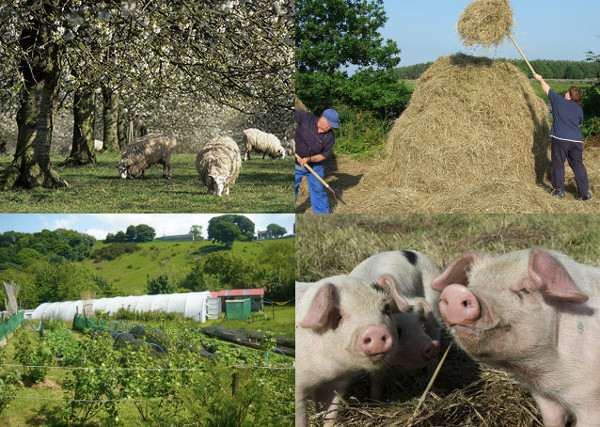
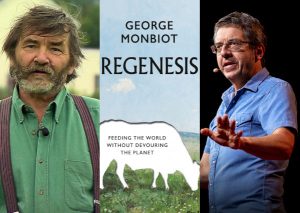
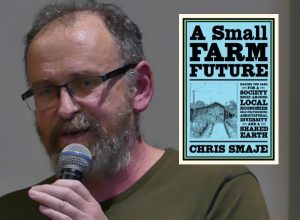

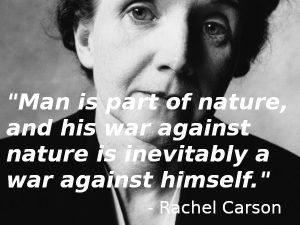
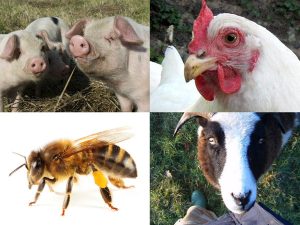
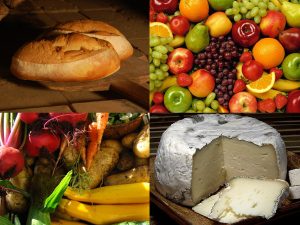


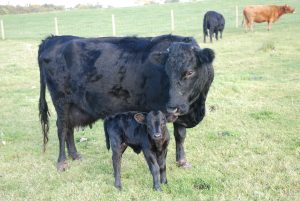

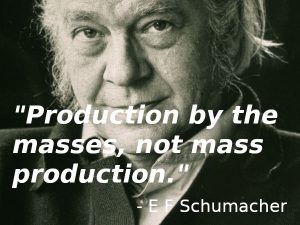
5 Comments
You really make it seem really easy with your presentation but I to find this topic to be actually one thing which I think I might by no means understand. It seems too complicated and extremely wide for me. I’m looking ahead for your next put up, I will try to get the hang of it.
<a href=”https://thefucksites.com/”>Paul Brown</a>
<a href=”https://howminute.com/”>HowMinute</a> I AM NOT CERTAIN WHERE YOU ARE GETTING YOUR INFORMATION, HOWEVER GOOD TOPIC. I NEEDS TO SPEND SOME TIME STUDYING MUCH MORE OR UNDERSTANDING MORE. THANKS FOR EXCELLENT INFO I WAS LOOKING FOR THIS INFORMATION FOR MY MISSION.
I can’t agree more with Mr. Smaje’s ruminations on the role of humanity in the web of life and the importance of participating in that web. As a reformed Urban Planner- back-to-the-land/gardener, I see the costs of urban land use as far outweighing its benefits. As Smaje says, the origen of cities had much more to do with commerce and the emergence of money as the ultimate product of human activity. The same goal was enhanced by the enclosure of rural land for the purpose of creating larger profit driven agribusiiness. Driving the subsistence farmers off the land meshed beautifully with providing low wage labor to energize new industry and manufacturing, and to put money int he hands of consumers to buy the products produced. That is why so many people moved to the cities, and it can be argued that, while life may be simpler in the city, it has been stripped of its meaning. The meaning lost was too obvious to notice for the earlier subsistence farmers, It had to do with belonging to and dancing with nature, and receiving its abundance without a “dollar” being exchanged.
Living in the city separate from nature creates the illusion that we are separate and independent from it. We are alienated from and fearful of nature, and the ultimate result we have today is a nature we don’t need except to consume as yet another commodity.
Another negative aspect of cities that often gets overlooked is the unnatural concentration of everything. The concentration of people requires the concentration of food production on large remote farms. the concentration of humanity creates the impossibility of familiarity and community, and the requirement of a higher level of control and order that hampers freedom. The concentration of waste products in cities and at the food production centers has proven to be an unmanageable problem, not just the abvious excrement problem, but the runnoff from our streets, roofs, and lawns, the nature of which is concentrated toxins and imperil the immediate natural environment.
I agree with Smaje that the creation of yet another high technology, capital intensive industry on which we will depend for all the food we need to exist will be a prize that the captains of industry will not allow to be controlled by the masses.
As to ther inability to feed ourselves on small rural farms distributed across the world, one can’t fail to notice that industrialization has emptied those rural lands of people. Thousands of small towns in the most industrialized country are boarded up and vacant. One who has not grown a vegetable garden may not have any idea of what an abundance of food can be grown on a small space with the main economic input being the human, animal, vegetab
There is much more to be said of the negative effects of cities. Smaje mentions the
Sorry, accidentally sent my comment off unfinished.
As I was saying:……..the human, animal, vegetable, and microbial input that does not require a singe monetary exchange.
Monbiot’s prescription of putting all of our food production in one technological basket that could, and probably would, come under the control of repressive corporations such as we have today, seens to be amyzingly shortsighted. Why would some other more equitable regimen win out given the very same economic envitronment we have today? To say that we would not allow corporations to dominate in the future is saying that we could enforce and change that which urban humanity as never yet been able to change.
Cities exist to enable Capitalism, because only large outlays of capital can develop the industries and services needed to serve a highly concentraated population, and a highly concentrated population is required to do the work of large scale industry.
We may need some large scale industry to maintain some the the technology we may want to maintain, but the default mode must be to do things at the smallest and most local scale. That is the only path to the equity, community, resilience, llife enhancing and truly meaningful existence that we so want.
Terry
‘the creation of yet another high technology, capital intensive industry on which we will depend for all the food we need to exist will be a prize that the captains of industry will not allow to be controlled by the masses.’ – exactly!